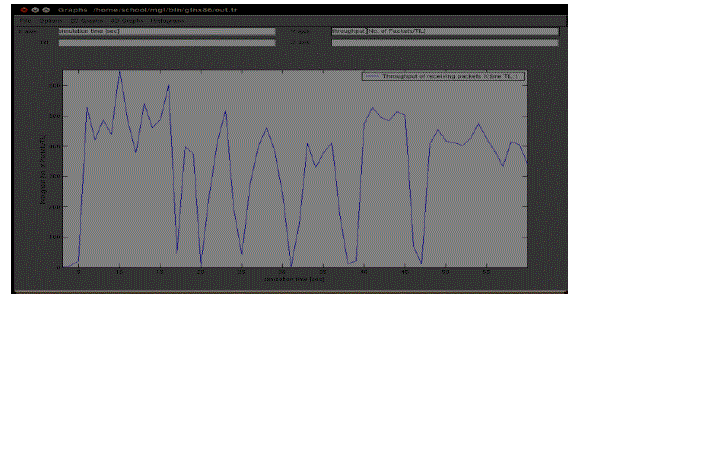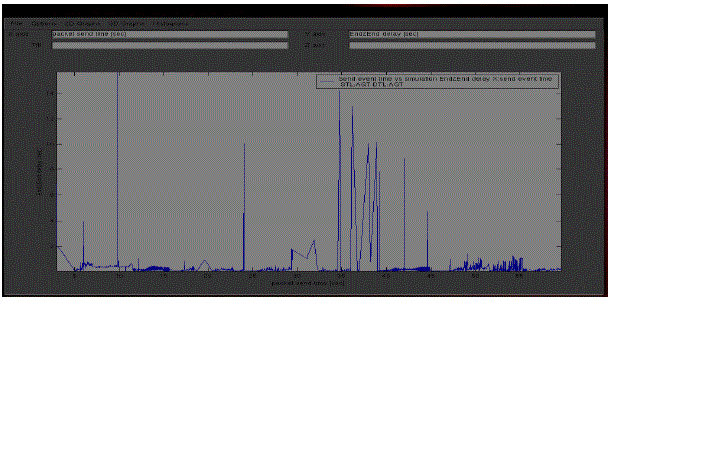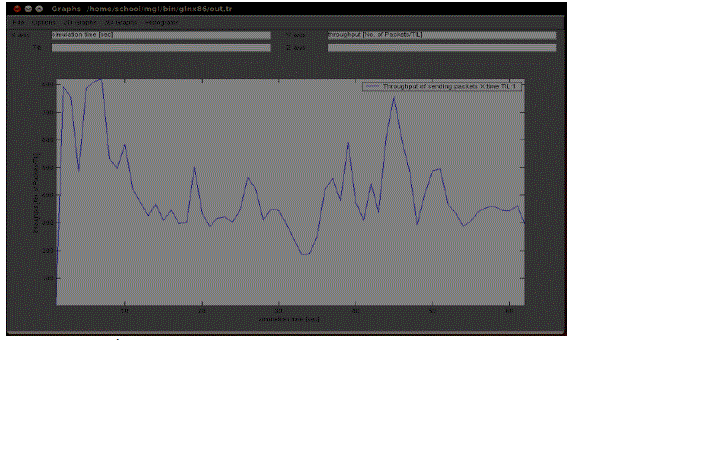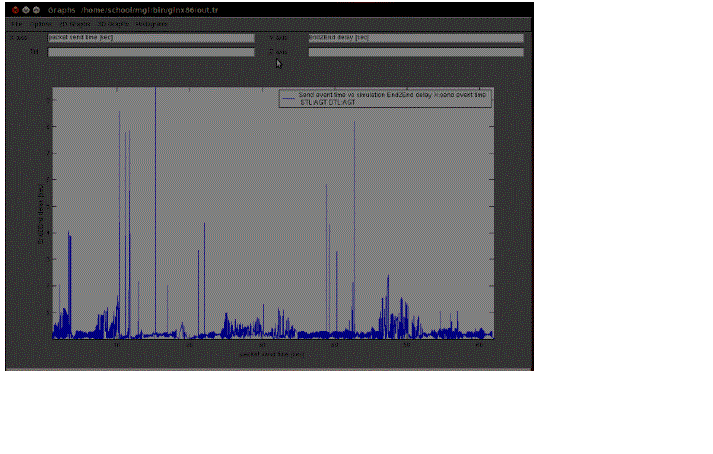Keywords
|
| VANET, Manet, Clustering, Packet loss |
INTRODUCTION
|
| Wireless communication technologies are nowadays the most popular means of data communication. It allows very high mobility, efficient working and is almost extreme economical. Users are becoming connected nearly anytime and anywhere: at work, at home, and even on roads. Vehicular ad hoc networks promise Intelligent Transportation Systems (ITS) new attractive and cost effective services that can definitely benefit users (drivers and passengers).[7] In VANETs, vehicles or nodes are equipped with wireless communication devices that create wireless links between these nodes. The main characteristics of VANETs are high mobility of nodes, No prior information about the location of nodes, predictable topology (to some extent),critical latency requirements, no problem with power, slow migration rate, high possibility to be fragmented, crucial effect of security and privacy. |
| A node (vehicle) can send data directly to another node (vehicle) which is located within its transmission range. A node can also send data to another node that is not located within its transmission range with the help of intermediate nodes, forming a process of multihop message routing.Message routing is a major problem in VANETs due to the mobility of a large number of nodes. The source node should be able to locate the destination node and it can build a reliable route towards the destination node. The way, messages are routed between sources and destinations is considered to be very important. Since vehicles move in relatively fast and in a random manner, determining the location of the destination vehicle constitutes a major challenge. |
LITERATURE REVIEW
|
| To communicate with the surrounding vehicles (nodes), VANET uses IEEE 802.11 wireless standards, GPRS and dedicated short-range communications. The primary goal of VANET is to provide road safety measures where information about vehicle’s current speed, location coordinates are passed with or without the deployment of Infrastructure. VANET also tries to improve traffic safety and comfort of driving, Minimize accidents, locating vehicles, traffic intensity, Up-to-date traffic information. Intersection Collision warning, Local danger warning and Weather information .Apart from safety measures, VANET also provides value added services like email, audio/video sharing etc. |
PROPOSED WORK
|
| VANET is a subset of MANET. The technology and protocols for MANETs need to be evaluated carefully so that it can be used in VANET environment. MANET and VANET are mobile networks but they mainly differ in the mobility pattern of VANET nodes. These VANET nodes will move on specific paths (roads) and hence not in random direction. In VANET the nodes are car having sufficient storage capacity and high processing power [2]. AODV routing protocol is used in VANET Environment for efficient communication between the vehicles .We propose the AODV routing protocol to reduce the packet loss during the transmission among the vehicles. |
| Node Clustering and Efficient Transmission: |
| Distinct groups of nodes called clusters are formed based on theirgeographical locations [1].Cluster-based solutions provide less propagation delay and high delivery ratio .Clustering can simplify essential functions as routing, bandwidth allocation, and channel access. |
| Static Cell Leader Updations: |
| Static cell leader is deployed based on the location. Static cell leader acts as a centralized server to store and forward the data to the intermediate node. One advantage of Static cell leader is gathering accurate neighbor information and cluster structure is promised with specific attributes. Another metric is the duration of each vehicle too becomes a member of the cluster. By sending a message to all neighbors (n), each vehicle can help each of its neighbors to decide the distance between them. Then each neighbor should send reply information(r), including the Vehicle ID, Cluster ID, distance, speed and direction. Hence, each vehicle needs to send out (n+r) messages for cluster construction.QOS metrics such as throughput, End2End Delay are analyzed for static cell leader. |
SIMULATION
|
| Ns-2 is extensively used by the networking research community. It provides substantial support for simulation of TCP, routing, multicast protocols over wired and wireless (local and satellite) networks, etc. It consists of C++ core methods and uses Tcl and Object Tcl shell as interface allowing the input file (simulation script) to describe the model to simulate.q |
RESULT AND ANALYSIS
|
| To evaluate the performance of routing protocol, the following metrics are considered. |
Throughput:
|
| The total amount of data a receiver R actually receives from the sender divided by the time it takes for R to get the last packet. |
| Throughput: T~ (1/RTT)*sqrt (3/2p) |
| Where, RTT= Round Trip Time (in seconds) |
| P= packet loss rate (fraction) |
Average End-to-end delay:
|
| End-to-end delay indicates how long it took for a packet to travel from the source to the application layer of the destination. |
| So, Average End-to-end Delay is calculated as: |
| End-to-End Delay (e) =Td-Ts Where, Td = Time when packet received at destination. |
| Ts=Time when packet created by source. |
| In Fig.1 Urban Area Scenario of Static Cell Leader Updations, the throughput will be high because of the static property of cell leader. |
| In Fig 2. There are some variations in End-to-End Delay due to loss of some packets. Compared to rural area scenario of Static cell leader updations, the delay is less. |
| In Rural Area Scenario of Static Cell Leader Updations, the throughput is irregular due to less number of traffic. End -to- End delay will be high due to less node movement. |
CONCLUSION AND FUTURE WORK
|
| In this paper, the Manet Routing protocol (AODV) has been evaluated and it reduces the packet loss greatly compared to other Routing Protocol in Vanet Environment. AODV routing algorithm provides efficient means of communication among the vehicles during the transportation. Creating high-performance, highly scalable and secure VANET technologies presents an extraordinary challenge to the wireless research community. Our Future work can be extended by implementing the Multicast routing in Vanet Environment. |
Tables at a glance
|
 |
| Table 1 |
|
Figures at a glance
|
 |
 |
 |
 |
| Figure 1 |
Figure 2 |
Figure 3 |
Figure 4 |
|
References
|
- Hanan Saleet, Otman Basir, Rami Langar and Raouf Boutaba,, Region-Based Location-Service-Management Protocol for VANETs, IEEE Transactions on Vehicular Technology, VOL. 59, NO. 2, February 2010
- Hanan Saleet, Rami Langar, Otman Basir, and Raouf Boutaba, Proposal and Analysis of Region-based Location Service Management Protocol for VANETs, IEEE "GLOBECOM" 2008 proceedings.
- Integrated intra-vehicle VANET system for increasing the road safety”, in proceedings of the Global Knowledge Forum NOOR-2008,Almadina, KSA, June 2008.
- Pranav Kumar Singh, Kapang Lego, Dr. Themrichon Tuithung, “Simulation based Analysis of Adhoc Routing Protocol in Urban and Highway Scenario of VANET”, International Journal of Computer Applications, Jan 2011
- Yan-Bo Wang, Tin-Yu Wu, Wei-Tsong Lee, Chih-Heng Ke,” A Novel Geographic Routing Strategy over VANET”, 2010 IEEE 24thInternational Conference on Advanced Information Networking and Applications Workshops.
- Event Data Recorder Applications for Highway and Traffic Safety”, US National Highway Traffic Safety Administration-Research andDevelopment URL: hhtp://www.nrd.nhtsa.dot.gov/edr-site/2006 “
- Hannes Hartenstein, Kenneth P Laberteaux, VANET: Vehicular Applications and Inter-Networking Technologies, Wiley & Sons Ltd., 2010
|